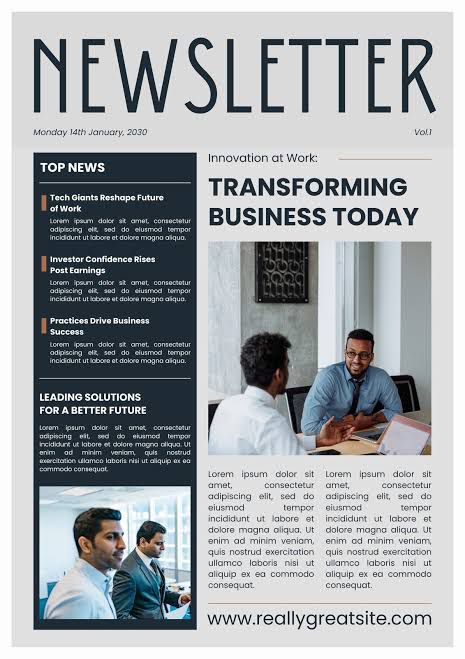Book Appointment Now
Types of Content Marketing:
Content marketing is the practice of creating valuable, relevant content that educates or entertains your audience—and in doing so, builds trust, authority, and engagement with your brand.
When you rely on a mix of content formats, you reach people in different ways—from search engines to social scrolling to in-box reading. Here’s a high-growth 14-format strategy, grounded in industry insights and effectiveness 💡:

1. Blog Posts (Articles & SEO Content)
Definition: Long-form articles on your website, optimized to answer questions, teach, or rank in search. They build organic traffic and domain authority.
When to Use: To explain complex subjects, answer prospects’ needs, support SEO, and establish thought leadership.
A stat for marketers: The average post is 1,500–2,500 words and gives Google more depth to rank you better.Search Engine Journal
Benefits: Evergreen exposure, backlink-earning potential, lead generation.
Examples: “How to pick a CRM” vs. “CRM trends 2026” — both can work.
2. Case Studies & White Papers
Definition:
- Case Studies: Real-world customer ROI stories (“how Company X increased conversions by 200 % using our platform”).
- White Papers: In-depth, data-rich documents (often gated) used in research and B2B sales cycles.Simplilearn.com
When to Use: Later in the funnel, targeting buyers looking for proof or research.
Benefits: Increases credibility, helps prospects evaluate you.
Stat: 78 % of buyers review case studies before making a decision. 76 % will share their info for a white paper.Simplilearn.com
3. Short-form & Long-form Video (YouTube, Reels, Podcasts)
Definition: Videos under 90 seconds for quick engagement or longer content for demos, interviews, and storytelling.Simplilearn.comSearch Engine Journallifewire.com
When to Use: Demoing products, training, announcements, or storytelling across different platforms.
Stats: 57 % of Gen Z and 73 % of all consumers use short-form video for product research. Short video ads deliver 2× engagement, and video is projected to form 82 % of global internet traffic by 2025.lifewire.com
How to maximize it: Repurpose podcasts, blog snippets, and case studies into short video clips—or embed them inside newsletters and websites.
4. Podcasts & Audio Content
Definition: Serialized audio shows or interviews available on your podcast/voice platforms.Simplilearn.com
When to Use: To showcase thought leadership, interview industry experts, or tell extended stories.
Pros: Great for commuting users, builds long‑term relationships with listeners.
Note: Best suited to an ongoing series—standalone episodes underperform.

5. Infographics & Visual Summaries
Definition: Visual storytelling of data, timelines, or insights designed for social, blogs, or emails.Simplilearn.com
When to Use: When you must explain statistics quickly or attract linkbacks—and when data is eye‑catching.
Tips: Embed embed codes for backlinks and add your branding.
6. Interactive Content (Quizzes, Tools, Calculators)
Definition: Engaging formats like self-assessment quizzes, ROI calculators, or mini web tools.Search Engine Journal
When to Use: To actively involve the user—especially effective for mid-funnel nurtures or B2B leads.
Why it works: They’re highly shareable, increase time-on-site, and naturally collect data points.
7. How-To Guides, eBooks & Online Courses
Definition:
- eBooks / Guides: Long-form content (5,000–10,000 words), often downloadable in exchange for an email.
- Courses / Mini‑Academies: Web-based lessons, videos, or walkthroughs.Search Engine JournalSimplilearn.com
When to Use: To establish authority and capture leads through in-depth value.
Advantages: High perceived value, excellent for lead capture and onboarding.
8. Checklists, Templates & Cheat Sheets
Definition: Simple, actionable tools that help complete tasks or make a plan.Search Engine Journal
When to Use: For quick-use content that API—especially top-of-funnel tools or blog upgrades.
ROI: Used for list sign-ups and often repackaged as content upgrades.
9. Social Media Content (Posts, Threads, Stories, Carousels)
Definition: Short-form updates—text, images, carousels, live sessions—across Instagram, LinkedIn, X, TikTok, Threads, etc.Simplilearn.comsocialbee.com
When to Use: Brand awareness, driving traffic, testing new ideas, and announcing new content.
Rule of Thumb: Follow the 80/20 ratio—helpful and entertaining content 80 % of the time, promotional the rest.Simplilearn.com
Stat: 63 % of marketers see social media as very important for business and are using it consistently.socialbee.com
10. User-Generated & Influencer Content
Definition: Content created by customers or creators (reviews, tagged posts, challenges). Influencer pieces may be paid or unpaid but show use‑cases or reviews.Search Engine Journalblog.hubspot.com
When to Use: To build authenticity, social proof, and broaden your reach.
Best Practices: Use a branded hashtag, curate customer content, and credit or reward contributors.
11. Email Newsletters & Sequences
Definition: Weekly or monthly newsletters or automated lead-nurture drip campaigns delivered via email.Search Engine Journal
When to Use: To nurture subscribers, promote new content, or offer exclusive value.
Principles: Clear subject lines, one focus per email, strong CTA, personalization.

12. Co-Branded, Sponsored & Thought-Leadership Content
Definition: Collaborated content with another brand or content created with paid distribution (sponsored newsletters, interviews, native editorial).en.wikipedia.orgen.wikipedia.org
When to Use: To tap into a new audience or build credibility fast.
Caution: Must align with your brand values and maintains editorial integrity.
13. Live Events & Webinars
Definition: Real-time online teaching sessions or Q&A events. Also includes hybrid events with online snippets repurposed afterward.Search Engine Journal
When to Use: When explaining strategy, product onboarding, or engaging top-of-funnel prospects.
Lead Magnet Tip: Gate with email registration, and repurpose into multiple UI pieces.
14. Microsites, Calculators & Branded Tools
Definition: Standalone mini sites, interactive tools, games, or experience hubs (e.g. “What’s your digital EQ score?” tool).
When to Use: Campaign-specific tactics, special announcements, gamification, research.
Advantage: High memorability and shareability, great for creative lead-gen and PR.
